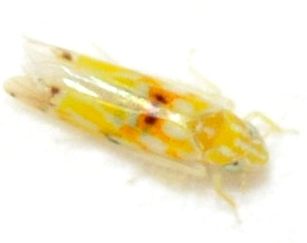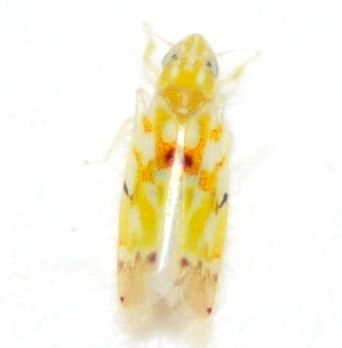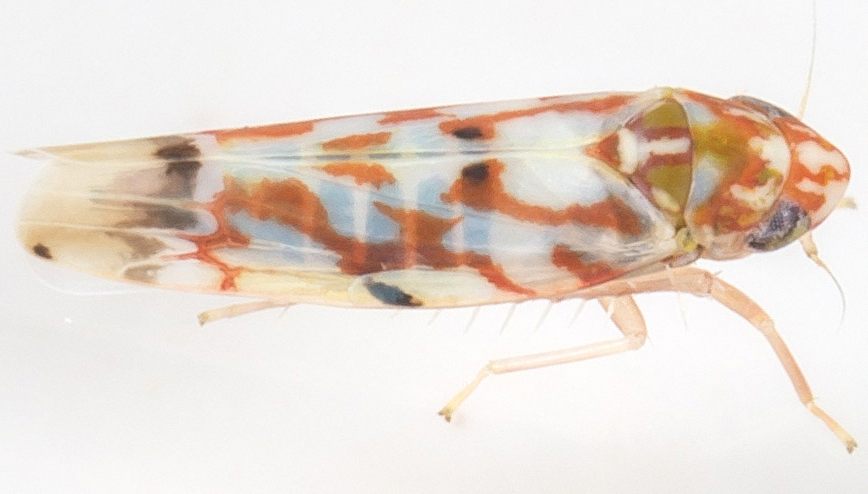
|
|
|
| synonym |
|
| description |
A yellowish to orange species with two prominent small black spots on the middle of the wings along the commissure. There are two yellow or orange parallel submedial lines on the top of the head, with a broad white midline in between. The pronotum has a Y or V-shaped mark, though in some orange individuals the posterior portion of the pronotum can be yellow or bluish, and in other individuals the Y is not as distinct, blending in with the color on the posterior portion of the pronotum. The costal margin of the wings has a small black mark in the middle, and the wing tips are smudged with brown; there is a dark brown to black thin band that transverses the apical wing venation. The face is pale, as is the thoracic venter outside of the dark mesosternum. Adults are 2.9-3.1 mm long. (Dmitriev & Dietrich, 2007)
For more images of this species, see: BG. |
| distribution |
An uncommon species, found in central and eastern United States (3I) |
| abundance |
Recent records from both the Piedmont and mountains; possibly more abundant in the right habitat. |
| seasonal_occurrence | |
| habitat |
Has been found in mixed hardwood forest. |
| plant associates |
Redbud (Cercis canadensis), Vitis sp. (3I) |
| behavior |
Can be attracted at night with a light. |
| comments |
There are two other species that could be confused with E. vagabunda that have dark dots on the wings: E. delicata and E. octonotata. In E. delicata, form 'accepta' has small black dots on the red markings in the middle of the wings. However, delicata is a fairly pale species compared to vagabunda with a lot of white. The wings markings are orange in delicata, whereas they are yellow or orange in vagabunda. Finally, the wing markings are thinner and more broken in delicata compared to vagabunda.
In E. octonotata, there is a much greater variation in color on the wings, with some forms being bicolored red and yellow. The black spots are also larger in this species compared to vagabunda. Most importantly though is a bold black stripe down the middle of the scutellum in octonotata, which helps to clearly distinguish this species from vagabunda. |
status |
[Native:]
[Introduced:]
[Extirpated:] | | list_type |
[Official:]
[Provisional:] |
| adult_id | Unmistakable and widely known Identifiable from good quality photos of unworn specimens
Identifiable from photos showing undersides, or other specialized views [e.g., legs, face]
Identifiable only by close inspection of structural features or by DNA analysis NULL |
| nymph_id | Unmistakable and widely known Identifiable from good quality photos, especially where associated with known host plants
Identifiable from close inspection of specimens or by DNA analysis
Identifiable only through rearing to adulthood NULL |
| G_rank |
|
| S_rank |
|
| rank_comments |
|
| tribe |
Erythroneurini |
| subgenus |
|
Species Photo Gallery for Erythroneura vagabunda No Common Name |
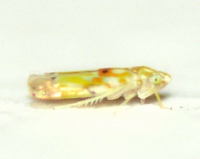 | Photo by: Kyle Kittelberger
Wake Co.
Comment: mixed hardwood forest habitat |  | Photo by: Kyle Kittelberger
Wake Co.
Comment: mixed hardwood forest habitat |
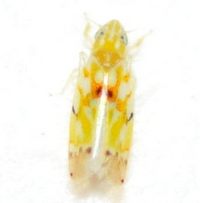 | Photo by: Kyle Kittelberger
Wake Co.
Comment: mixed hardwood forest habitat |  | Photo by: John Rosenfeld
Out Of State Co.
Comment: female |
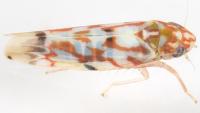 | Photo by: John Rosenfeld
Out Of State Co.
Comment: female | 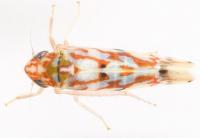 | Photo by: John Rosenfeld
Out Of State Co.
Comment: female |
 | Photo by: Marilyn Westphal
Henderson Co.
Comment: Attracted to uv light sheet |  | Photo by: Marilyn Westphal
Henderson Co.
Comment: Attracted to UV light sheet |
|

 »
»